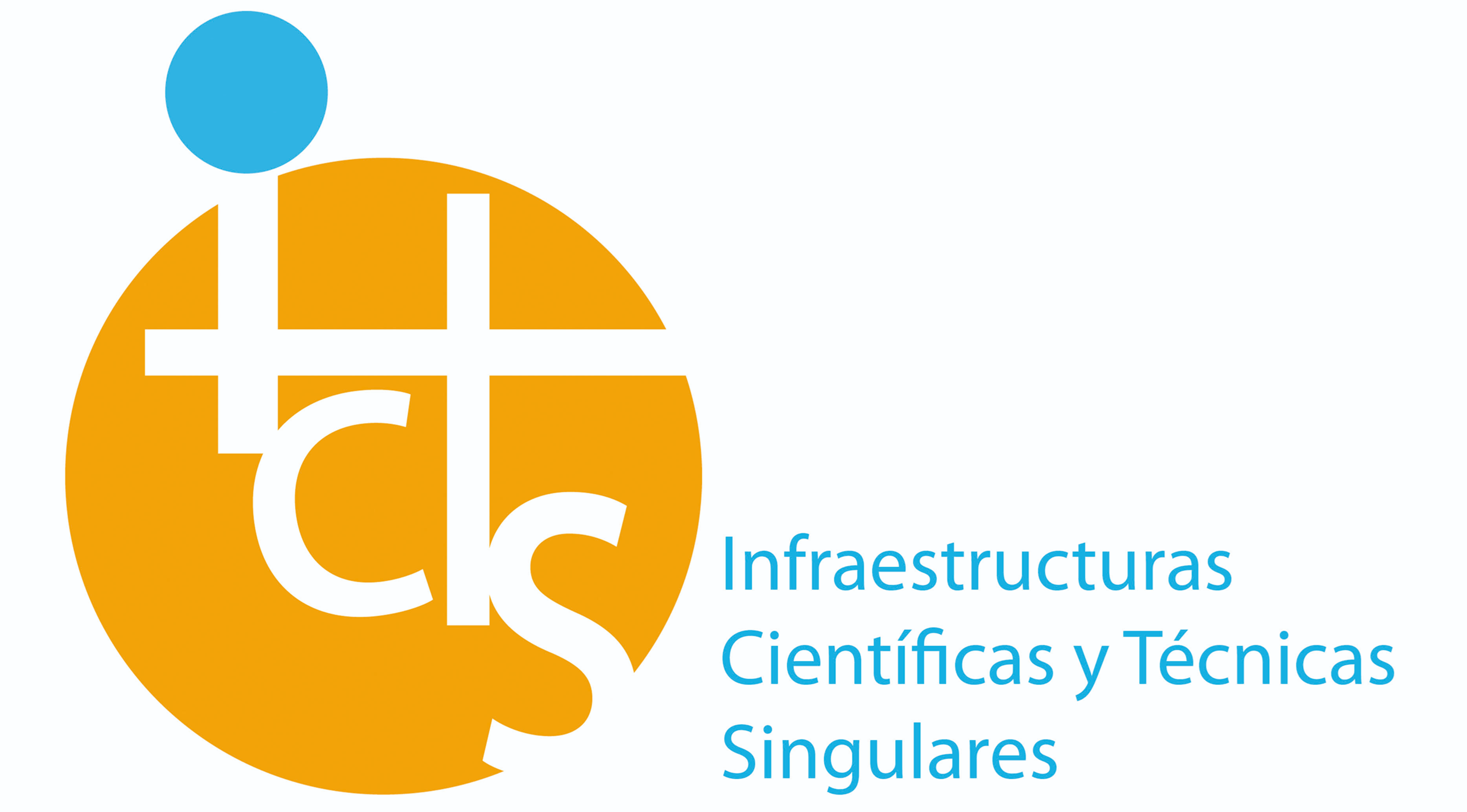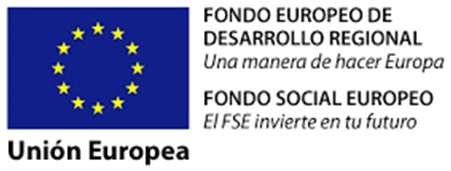Historia
En 1974, el Instituto Geográfico Nacional abrió una nueva línea de investigación en astronomía para dinamizar la actividad del Observatorio Astronómico Nacional y apostó por la creación de un Observatorio en el municipio de Yebes, equipado con tres instrumentos de observación astronómica: un astrógrafo doble para la observación de asteroides, una torre solar y un radiotelescopio de 14 m de diámetro. Este último instrumento es el más singular y relevante de todos los anteriores porque en torno a él, se formó el primer grupo de radioastronomía español. La observación astronómica a longitudes de onda radio, permite obtener información valiosa sobre el Universo que no puede conseguirse mediante observaciones en el óptico. Desde sus inicios hasta hoy, la radioastronomía ha contribuido a esclarecer procesos físicos como la formación de estrellas o fenómenos como la detección de agujeros negros..
Dado que en España no existía ni tradición ni experiencia previa, los astrónomos que se incorporaron al Observatorio se desplazaron a los principales centros de radioastronomía extranjeros, localizados en Francia, Alemania, Estados Unidos y Suecia, para formarse en las técnicas de observación, la operación de los radiotelescopios, la explotación científica de las observaciones radioastronómicas y la construcción de receptores de microondas. Desde los primeros momentos, resultó evidente que era necesario dotar al Observatorio de Yebes de astrónomos e ingenieros siguiendo los mismos criterios que los principales observatorios radioastronómicos del mundo. Por otra parte, la variedad de instrumentación necesaria para operar un radiotelescopio exigió la especialización de los miembros del Observatorio. De este modo, el Observatorio quedó configurado desde el comienzo con una doble faceta: científica e instrumental.
La primera observación manual con el radiotelescopio de 14 m se realizó sobre la Luna en 1979 con un receptor a longitudes de onda radio, prestado por colegas franceses. En 1988, y tras años de trabajo, se instaló en el radiotelescopio de 14 m el primer receptor enfriado a temperatura criogénica (-250 °C) que fue diseñado y fabricado íntegramente en el Observatorio con el apoyo de la Escuela de Ingenieros de Telecomunicación de la Universidad Politécnica de Madrid.
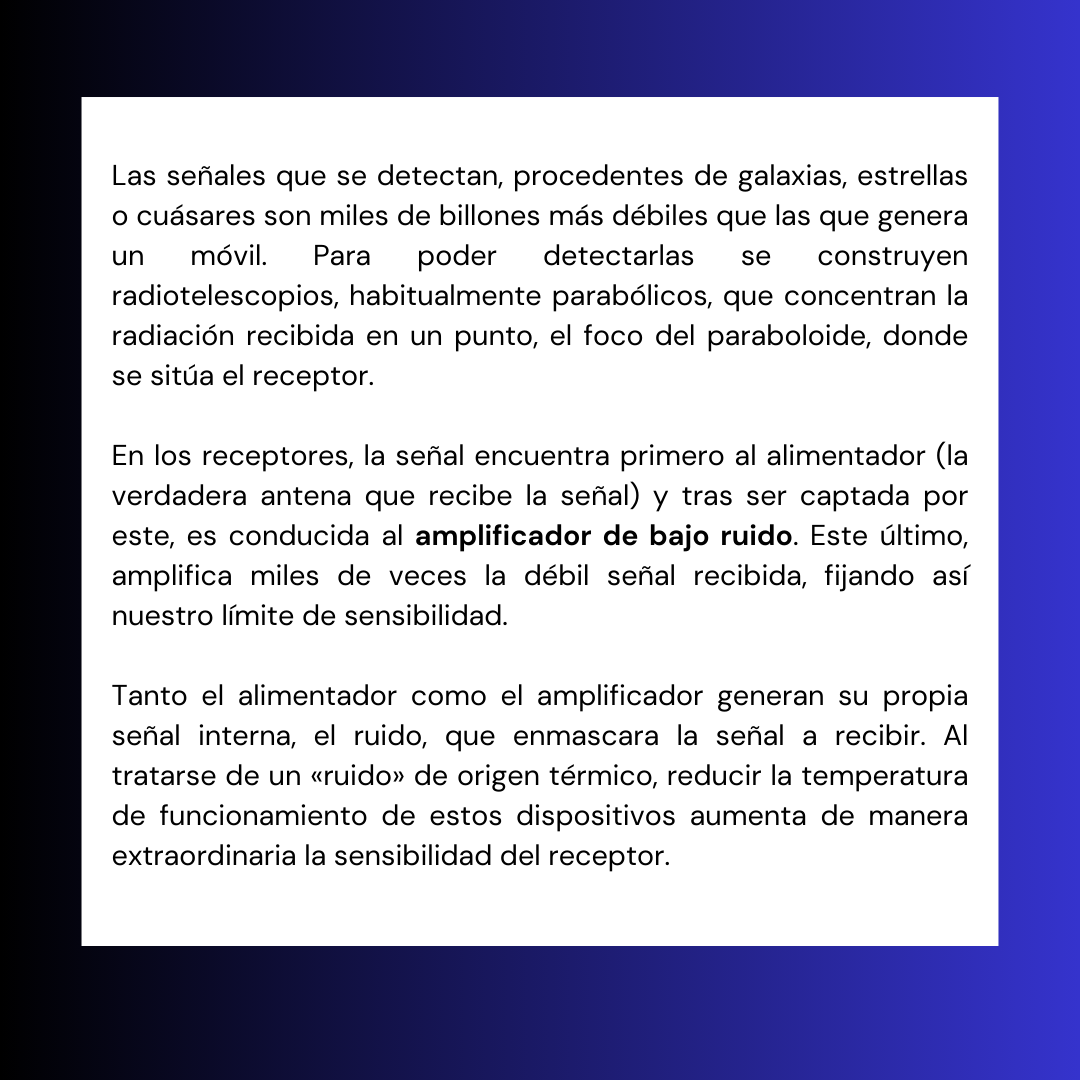
Sin duda, uno de los elementos clave de los receptores de un radiotelescopio son los amplificadores criogénicos de muy bajo ruido. El Observatorio de Yebes se especializó muy pronto en su diseño y fabricación. Esta actividad de alta tecnología que comenzó hace más de 30 años se mantiene activa a un altísimo nivel competitivo en la actualidad. La tecnología española en radioastronomía ha requerido una inversión considerable en personal e instrumentación durante estos 50 años. Hoy en día, sus laboratorios y talleres ocupan una superficie de más de 1.000 metros cuadrados y se encuentran equipados con moderna tecnología y personal especializado.
Los amplificadores producidos en el Observatorio de Yebes, se han instalado en numerosos receptores de radiotelescopios distribuidos por todo el mundo. Cabe destacar su uso en los receptores de IRAM, de la misión espacial HERSCHEL de la Agencia Espacial Europea y los receptores de varias bandas de frecuencia del Atacama Large Millimeter Array (ALMA), el interferómetro milimétrico más sensible del mundo en este momento. Las prestaciones de estos dispositivos son tan altas, que se han empleado también en comunicaciones con sondas espaciales muy lejanas (del espacio profundo), así como en el reciente campo de la computación cuántica. Un último paso al frente hacia el estado del arte, ha sido el diseño de amplificadores monolíticos MMIC con excelentes resultados. Los amplificadores diseñados y construidos en Yebes forman ya parte de la evolución científico-técnica en radioastronomía, habiendo sido decisivos en descubrimientos tan trascendentes y mediáticos como la imagen más nítida del entorno del agujero negro de la Vía Láctea: Sgr A*.
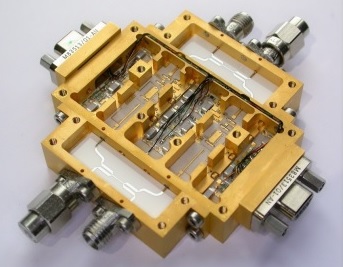

El radiotelescopio de 40 metros, un nuevo impulso para el desarrollo de nuestros receptores criogénicos
A finales de los años 90 y ante el envejecimiento del radiotelescopio de 14 m y sus posibilidades limitadas, se comenzó a estudiar la posibilidad de dotar al Observatorio de un gran radiotelescopio moderno, que además permitiera el estudio del medio interestelar con gran sensibilidad. Tras años de intensos trabajos tecnológicos y de gestión, en el año 2005 se inauguró un radiotelescopio de 40 m de diámetro, actualmente el instrumento más importante del Observatorio de Yebes y el que confiere la naturaleza de ICTS al Observatorio desde el año 2013. El radiotelescopio de 40 m vio su primera luz en 2007 observando, otra vez, la Luna, y se incorporó inmediatamente a la red europea de VLBI (EVN), siendo uno de los principales elementos de esta red por su alta sensibilidad y fiabilidad. Desde hace más de 10 años, este radiotelescopio es también parte de la red geodésica del Servicio Internacional de VLBI (IVS), que determina los parámetros de la orientación de la Tierra en el espacio.
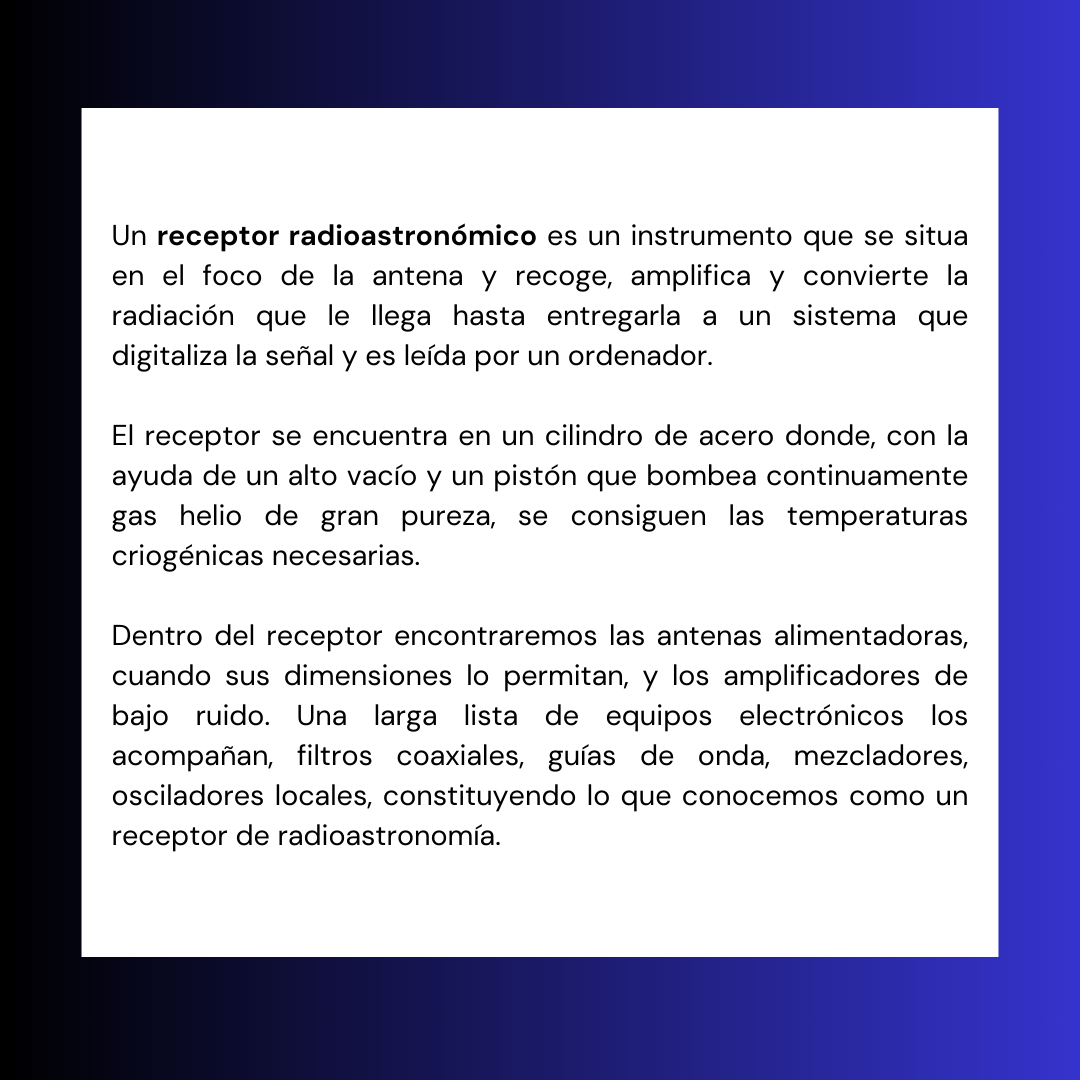
El uso del radiotelescopio está abierto a astrónomos de todo el mundo a través de un acceso abierto y competitivo con un comité de evaluación de propuestas.
La puesta en marcha del radiotelescopio de 40 m marcó el comienzo de una nueva etapa de desarrollos tecnológicos en el Observatorio de Yebes. Para explotar todas las capacidades del nuevo radiotelescopio, fue necesario construir nuevos receptores criogénicos de bajo ruido.
Su fabricación es un trabajo muy específico en el que participan ingenieros, técnicos electrónicos y mecánicos, todos ellos altamente especializados. Una actividad que se inicia en la mesa de trabajo de los ingenieros con los diseños del alimentador, el criostato, los amplificadores y los conversores. Posteriormente pasa a los laboratorios y talleres donde técnicos con una alta cualificación llevan a cabo su construcción, y después son probados durante semanas en los laboratorios de medida para finalmente ser instalados en los radiotelescopios. Este proceso dura meses, involucra trabajadores de diferentes áreas y requiere, una vez más, un gran despliegue de recursos tanto de personal como de inversión económica.
En la actualidad, se han construido receptores criogénicos de bajo ruido para otros institutos y observatorios del mundo que lo han solicitado.
Gracias al esfuerzo realizado, el radiotelescopio de 40 m es uno de los instrumentos más completos del mundo en este rango de frecuencia, especialmente en las redes de VLBI. La experiencia ganada desde la construcción del primer receptor, ha permitido situar al Observatorio de manera singular entre los pocos centros con tal capacidad en todo el mundo.
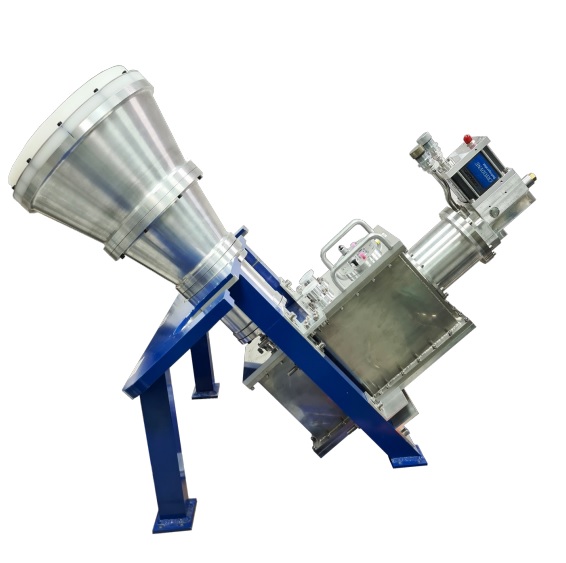
RAEGE y la geodesia espacial, el impulso definitivo
En 2012, para potenciar el área de observaciones de radioastronomía con fines geodésicos, el IGN y el Gobierno Regional de Azores firmaron un convenio para la creación de una Red Atlántica de Estaciones Geodinámicas y Espaciales (RAEGE), formada por cuatro radiotelescopios de 13,2 m de diámetro, situados en lugares estratégicos de España y Portugal: en el municipio de Yebes (en la placa tectónica euroasiática), en las islas de Gran Canaria y Santa María de Azores (en la placa africana) y en la isla de Flores de Azores (en la placa tectónica americana). Esta red permitirá determinar con gran precisión el movimiento relativo de las tres placas tectónicas donde se asentarán los radiotelescopios. En 2013 se inauguró el primero de los elementos de la red RAEGE, el radiotelescopio de 13,2 m en el Observatorio de Yebes. En 2014 se construyó el radiotelescopio en la isla de Santa María y para los próximos años está prevista la construcción de los radiotelescopios en las islas de Gran Canaria y Flores.
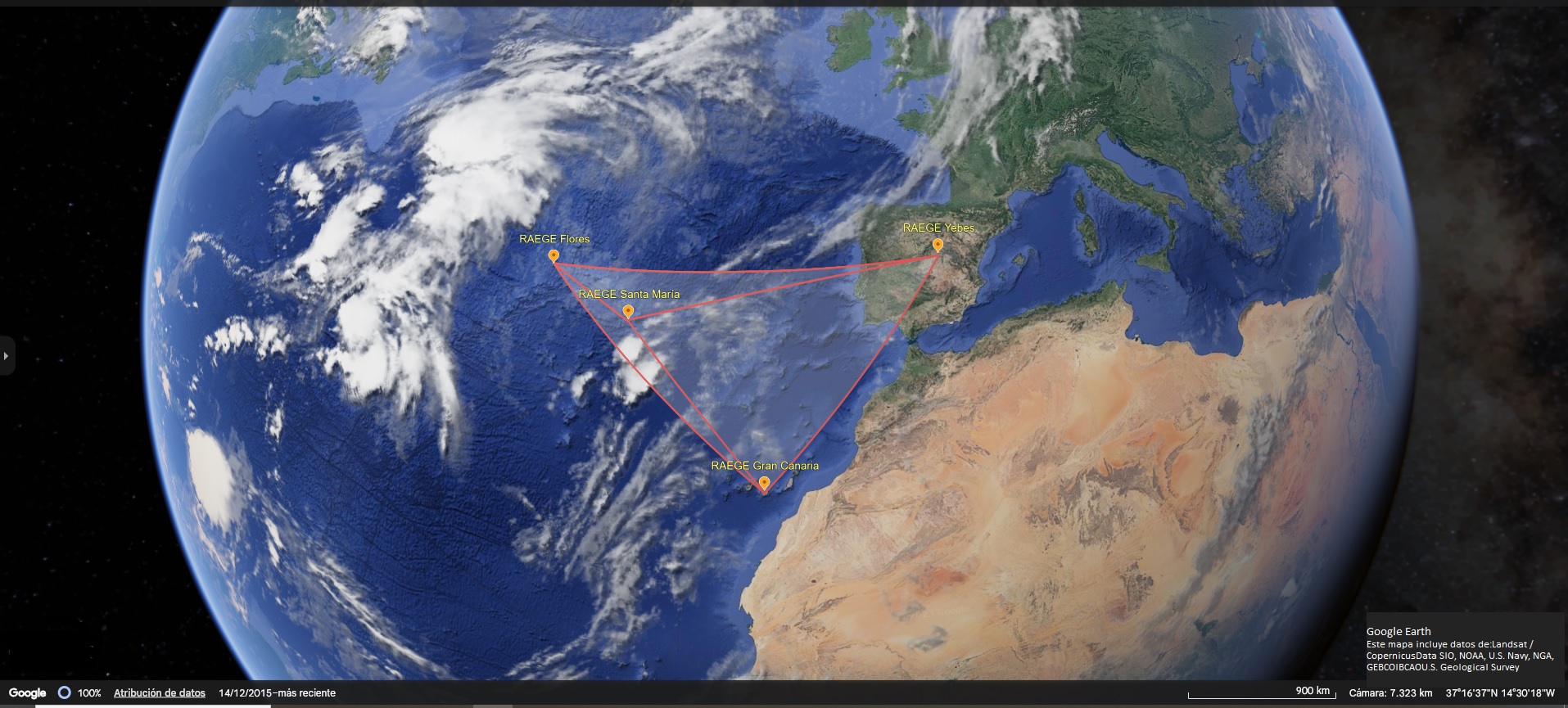
Estos radiotelescopios, además de realizar estudios regionales, se integrarán en el proyecto global VGOS (VLBI Geodetic Observing System), el siguiente gran proyecto de la IVS, cuyo objetivo es establecer un sistema de referencia sobre la superficie terrestre con precisiones mejores que un 1 mm. Este sistema será utilizado para determinar la orientación relativa de la Tierra en el espacio con la máxima precisión posible y para proporcionar una referencia en tierra a los satélites que orbitan en torno a nuestro planeta.
El impulso del proyecto RAEGE ha servido para seguir aumentando las capacidades tecnológicas del Observatorio de Yebes. Un ejemplo de ello es que el proyecto VGOS precisa para su implementación que los radiotelescopios que forman su red estén equipados con nuevos receptores de banda ancha. Para ello, en 2013 comenzó el diseño del primer receptor de banda ancha en los laboratorios de Yebes. En ese momento, tan solo existía en el mundo otro similar en el Observatorio de Haystack en Estados Unidos. Su construcción finalizó a principios de 2016 y se instaló unos meses después en el radiotelescopio de 13,2 m del Observatorio, reemplazando el anterior receptor denominado tribanda y también fabricado en Yebes. Su instalación fue un éxito y permitió que la antena de 13,2 m de Yebes entrará a formar parte del selecto grupo de 5 telescopios en todo el mundo a la vanguardia del proyecto VGOS.
Posteriormente, se han fabricado receptores similares para otros radiotelescopios en el mundo, y en la actualidad el Observatorio de Yebes ha fabricado la mitad de los receptores de la red VGOS. A la vista de los excelentes resultados obtenidos por el receptor de banda ancha de Yebes y de los equipos auxiliares y subsistemas que este utiliza, el Observatorio de Yebes ha sido calificado como Centro de Desarrollos Tecnológicos para el IVS. La presencia de la tecnología «made in Yebes» en el mundo de la geodesia espacial y por lo tanto en la radioastronomía es ya incontestable.
* Texto adaptado de: Entre el Cielo y La Tierra. Revista del Ministerio de Fomento, No. 694, pp. 3-11). Autores: Jose Antonio López Fernández (Subdirector General de Astronomía) y Pablo de Vicente Abad (Director del Centro de Desarrollos Tecnológicos del Observatorio de Yebes). IGN



